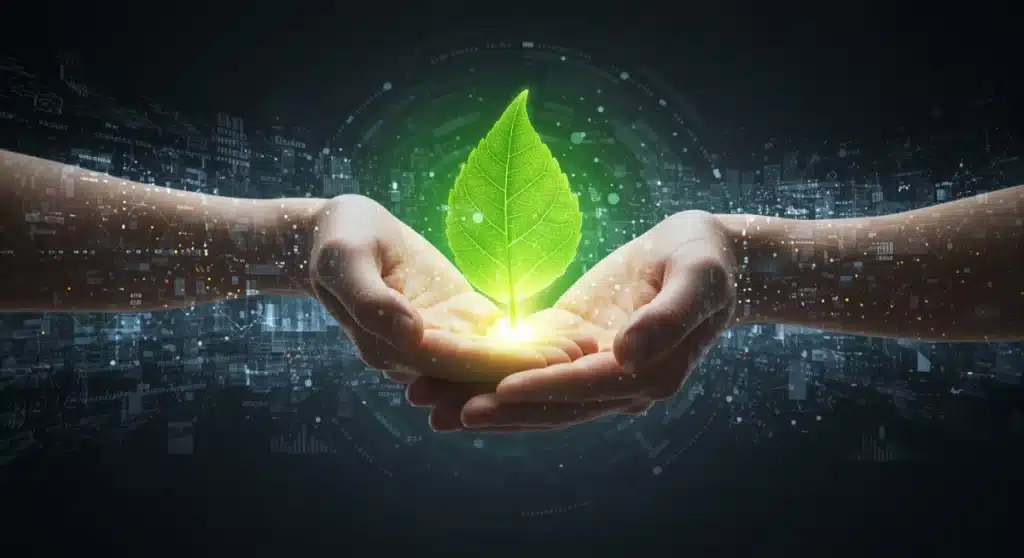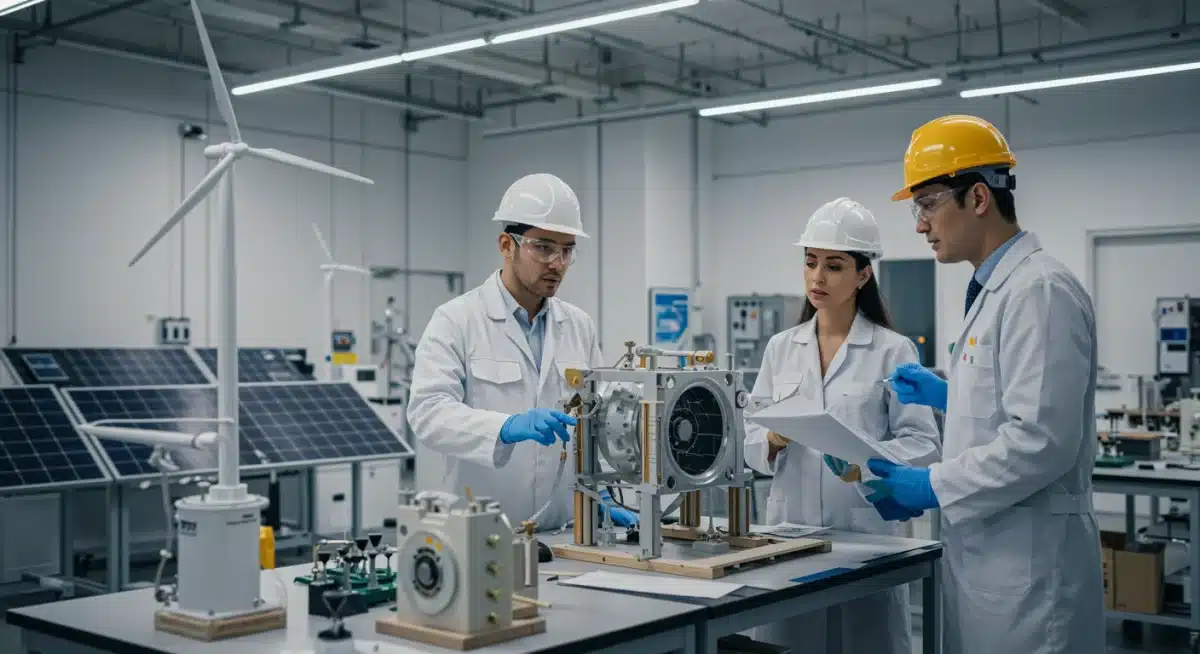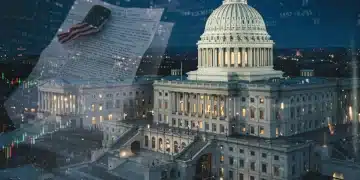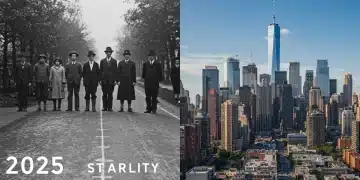New 2025 Federal Grant Programs: Unlocking $50 Billion for Sustainable Technology

Breaking news reveals that the federal government is launching significant financial initiatives. The New 2025 Federal Grant Programs: Unlocking $50 Billion for Sustainable Technology Initiatives are poised to revolutionize green innovation across the nation. What does this mean for businesses, researchers, and communities?
Federal Government Commits $50 Billion to Green Future
The U.S. federal government has officially announced a groundbreaking commitment: $50 billion dedicated to sustainable technology initiatives through new grant programs set to launch in 2025. This massive investment underscores a national priority to accelerate climate solutions, foster economic growth, and position the United States as a global leader in green innovation. The funding targets a broad spectrum of projects, from renewable energy development to advanced recycling technologies.
This unprecedented allocation of funds is expected to stimulate research and development, facilitate the commercialization of new technologies, and create thousands of jobs in the burgeoning green sector. Officials state that the programs are designed to be accessible to a diverse range of applicants, including small businesses, large corporations, academic institutions, and non-profit organizations, ensuring a wide-reaching impact.
Key Pillars of the 2025 Sustainable Technology Grants
The newly unveiled 2025 Federal Grant Programs are structured around several core pillars, each designed to address critical areas of sustainable development. These pillars aim to create a comprehensive framework for advancing green technologies and practices nationwide. The focus is on projects that demonstrate both environmental benefit and economic viability, ensuring long-term sustainability.
Renewable Energy Expansion
A significant portion of the $50 billion is earmarked for projects that expand renewable energy sources. This includes advancements in solar, wind, geothermal, and hydroelectric power generation. The goal is to reduce reliance on fossil fuels and transition towards a cleaner energy grid.
- Solar Energy Innovation: Funding for next-generation solar panel efficiency and storage solutions.
- Wind Power Development: Support for offshore wind farms and advanced turbine technologies.
- Geothermal Projects: Investment in harnessing earth’s heat for energy.
- Hydroelectric Upgrades: Modernization of existing hydro facilities and exploration of new, environmentally sound projects.
Sustainable Transportation Solutions
Improving transportation efficiency and reducing emissions are also high priorities. Grants will support the development and deployment of electric vehicles, alternative fuels, and smart transportation infrastructure. This includes projects focused on public transit and freight logistics.
Advanced Materials and Circular Economy
Funds will also target innovations in materials science to promote a circular economy. This involves developing new, sustainable materials, improving recycling processes, and designing products for longevity and recyclability. The aim is to minimize waste and maximize resource utilization.
Eligibility and Application Process Details
As of late November 2024, the federal agencies overseeing the 2025 Federal Sustainable Grants are finalizing the detailed eligibility criteria and application procedures. Initial reports indicate a streamlined process designed to encourage broad participation while maintaining rigorous standards for project viability and impact. The overarching goal is to ensure that the $50 billion is distributed effectively to achieve maximum sustainable impact.
Prospective applicants are strongly advised to begin preparing their proposals now, focusing on clear objectives, measurable outcomes, and a strong alignment with the grant program’s sustainable technology goals. Collaboration between different entities, such as universities and private companies, is also highly encouraged and may be a significant advantage in the competitive application process. The official application portal is expected to open in early 2025.
Who Can Apply?
Eligibility is anticipated to be broad, encompassing various organizations committed to sustainable technology. This inclusive approach aims to leverage expertise and innovation from across different sectors.
- Private Sector Companies: Businesses of all sizes, from startups to established corporations, innovating in green tech.
- Academic Institutions: Universities and research centers conducting cutting-edge sustainable research.
- Non-Profit Organizations: Groups focused on environmental conservation and sustainable community development.
- State and Local Governments: Public entities implementing sustainable infrastructure projects.
Economic Impact and Job Creation Potential
The injection of $50 billion into sustainable technology initiatives is poised to generate substantial economic benefits and create a significant number of jobs across the United States. Analysts project that this investment will not only stimulate growth within the green sector but also have ripple effects throughout the broader economy. The focus on domestic innovation and manufacturing is expected to bolster American competitiveness.
Job creation is anticipated in various fields, ranging from scientific research and engineering to manufacturing, installation, and maintenance of new sustainable technologies. These jobs often require specialized skills, leading to increased demand for STEM education and vocational training programs. The federal government’s commitment aims to cultivate a skilled workforce ready to support a sustainable future.

Technological Advancement and Environmental Benefits
Beyond economic stimulus, the New 2025 Federal Grant Programs are fundamentally about driving technological advancement and achieving significant environmental benefits. The $50 billion investment is expected to accelerate the development of solutions that address climate change, reduce pollution, and enhance resource efficiency. This includes breakthroughs in energy storage, carbon capture, and sustainable agriculture.
The grants will support projects that have the potential for widespread adoption and scalable impact. For instance, funding for advanced battery technologies could revolutionize electric vehicle performance and grid stability. Similarly, investments in sustainable agriculture could lead to more efficient food production with reduced environmental footprints. The ultimate goal is to foster a cleaner, healthier planet for future generations.
Regional Focus and Community Engagement
A key aspect of the 2025 Federal Grant Programs is an emphasis on regional impact and community engagement. While the funding is federal, the programs are designed to address specific local and regional needs, ensuring that sustainable technology initiatives benefit diverse communities across the nation. This approach aims to foster equitable development and empower local stakeholders.
Targeting Underserved Communities
A portion of the funds is expected to be directed towards projects in underserved communities, promoting environmental justice and ensuring that the benefits of sustainable technology are accessible to all. This includes initiatives for clean energy access, green job training, and pollution reduction in historically marginalized areas.
- Community-Led Projects: Support for initiatives proposed and managed by local community groups.
- Infrastructure Upgrades: Funding for sustainable infrastructure improvements in low-income areas.
- Educational Programs: Grants for STEM education and green skills training in disadvantaged regions.
The federal government plans to work closely with state and local entities to identify priority areas and facilitate effective implementation of grant-funded projects. This collaborative model is crucial for maximizing the impact of the $50 billion investment and ensuring that sustainable solutions are tailored to specific local contexts.
Anticipated Challenges and Opportunities
While the New 2025 Federal Grant Programs present immense opportunities, they also come with anticipated challenges. The sheer volume of funding and the ambitious goals will require robust oversight, efficient administration, and effective collaboration between various stakeholders. Ensuring accountability and preventing misuse of funds will be paramount to the program’s success.
One significant opportunity lies in fostering public-private partnerships. By leveraging federal funds, private sector investment in sustainable technology can be greatly amplified, leading to faster innovation and broader deployment of solutions. Additionally, the programs offer a chance to strengthen international collaborations, positioning the U.S. as a leader in global sustainable development efforts. Navigating the balance between rapid deployment and thorough vetting will be a key challenge for implementing agencies.
| Key Point | Brief Description |
|---|---|
| $50B Federal Commitment | New 2025 grant programs allocate significant funds for sustainable technology initiatives. |
| Key Investment Areas | Focus on renewable energy, sustainable transport, and circular economy innovations. |
| Economic & Job Growth | Expected to create thousands of green jobs and stimulate economic activity. |
| Broad Eligibility | Open to businesses, academia, non-profits, and government entities. |
Frequently Asked Questions About 2025 Federal Grants
The main goals include accelerating climate solutions, fostering economic growth through green jobs, and positioning the U.S. as a leader in sustainable innovation. The programs aim to support a wide range of environmentally beneficial projects and technologies.
Eligibility is broad, encompassing private companies, academic institutions, non-profit organizations, and state and local governments. The programs are designed to be inclusive, encouraging diverse entities to contribute to sustainable technology advancements.
While specific dates are being finalized, the official application portal is anticipated to open in early 2025. Prospective applicants are advised to prepare proposals now, focusing on clear objectives and alignment with program goals.
Funding will target renewable energy expansion (solar, wind), sustainable transportation solutions (EVs, alternative fuels), and advanced materials for a circular economy. Projects demonstrating both environmental and economic viability are prioritized.
The $50 billion investment is projected to create thousands of jobs in research, engineering, manufacturing, installation, and maintenance within the green sector. It will also stimulate broader economic growth and enhance American competitiveness in sustainable industries.
Looking Ahead: The Future of Sustainable Technology Funding
The launch of the New 2025 Federal Grant Programs marks a pivotal moment for sustainable technology in the United States. This substantial $50 billion commitment signals a long-term strategic vision from the federal government, aiming to embed green innovation deeply into the national infrastructure and economy. What happens next involves not only the successful allocation of these funds but also the continuous monitoring of project outcomes and their broader societal impact. As the application window approaches, the focus will shift to how effectively organizations can leverage this opportunity to drive tangible progress. This initiative is expected to set a precedent for future federal investments, shaping a sustainable and resilient future for generations to come.





